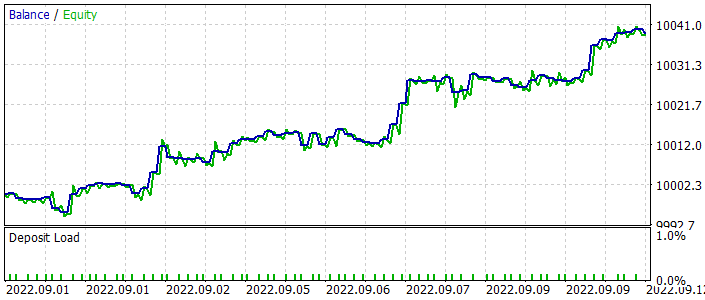Machine learning in trading: theory, models, practice and algo-trading - page 3205
You are missing trading opportunities:
- Free trading apps
- Over 8,000 signals for copying
- Economic news for exploring financial markets
Registration
Log in
You agree to website policy and terms of use
If you do not have an account, please register
MO removes such problems. I don't even see how you can search for patterns manually that don't exist
This is a univariate case. If you make it multidimensional, you can explain any features in the interaction.
in increments there is something like this, at first glance even profitable, on average.
Filtered
I haven't seen an article where you write about these "patterns" - earlier you said that there is one.
Earlier you were involved in reinforcement learning, at what point did you abandon it?
I have an interesting idea, how you can imagine the impact on the environment, and the environment will not be the balance.
MO removes such problems. I don't even see how you can search for patterns manually that don't exist
This is a univariate case. If you make it multidimensional, you can explain any features in the interaction.
in increments there is something like this, at first glance even profitable, on average.
Filtered
Well, we have a two-dimensional case, increments and time) MO does not remove the problem, just allows you to look deeper.))))
Multivariate, in a two-dimensional series of course you can introduce derivatives from some series into another series, but it's the same thing, a deeper look.
In the sense of exploring a function more deeply, no more.
I'll prepare calculations for ticks later, I'll have to use google TPU for speeds
For ticks would be interesting)
I haven't seen an article where you write about these "patterns" - earlier you said there was one.
Earlier you were involved in reinforcement training, at what stage did you abandon this direction?
I had an interesting idea, how you can present an impact on the environment, and the environment will not be a balance.
Yeah, it works like the Grail. Take it, use it. Turnkey

https://www.mql5.com/ru/articles/11452
158th article already.
Didn't say there was one and didn't write one. It's just patterns found by Euclidean distance, with any given accuracy.
So I misunderstood the previous posts.
So if you approach the problem not head-on, but more creatively ...
You practice averaging, imagine that the trend is a monster, and opening a position is a shot at it, for neutralising (closing in the plus) the monster with a smaller number of shots to give the greatest reward. The volume of a position can be thought of as an energy charge that is decreasing, and the more of it retained the better. Trends are independent monsters for training.
A level is a price around and within which important events occur (breakout, rebound, etc.).
It is important not only that there are important events around the level, but also the patterns of events themselves (not only what broke the level, but also how exactly it broke... or rebounded).
An example of description of one of many levels.
The blue circle denotes the place where the rule was triggered, after the circle the data is not available for the algorithm.
It is all one and the same level which is described by this rule
Is there any chance to describe this non-linear event by inputting the last 5 candles????
Is there any chance to find such levels by comparing them by some metrics, let's say through Euclidean distance ????
Of course not.
Is there any chance to describe this non-linear event by inputting the last 5 candles ?????
Of course not.
Tell me what language it's written in and how it sounds if it's in human language.)
I'm not an MO at all, I'm just curious. So I have the right to ask stupid questions.)
Isn't there any way to reduce the amount of data?
Instead of a bunch of candlesticks, you can feed zigzag values. Imho it will describe your pattern at the level no worse.
Something like, ZZ leverage is bigger/smaller than the previous one, etc.
No?
I realise that the whole pattern is much wider than this piece of chart on the screen.
I see the whole pattern like this:
Instead of a bunch of candlesticks submit zigzag values. Imho it will describe your pattern on the level no worse.
I also prefer zigzag to candlesticks, but there is a problem of ambiguity with it, because there is a dependence of the resulting pattern on the zigzag parameter. For example, in the first picture a smaller zigzag may or may not draw two tops instead of one #2, because there are two candles and anything can be inside them.
Of course, you can clearly see by eye what step of the zigzag should be taken in each specific case of pattern implementation, but it is almost impossible to formalise this vision in the form of an algorithm.